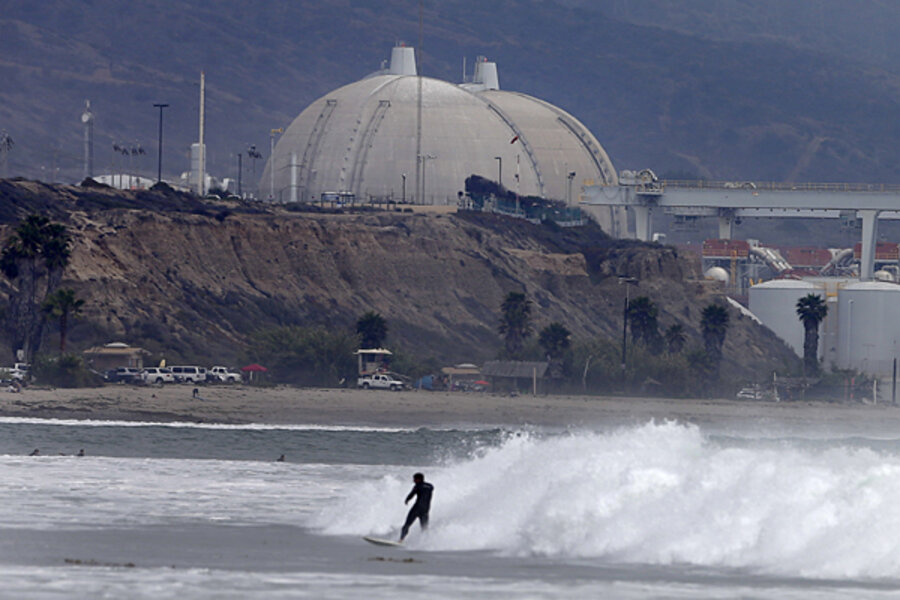San Onofre: the fallout from closing California's nuclear plant
Loading...
Half of California’s Nuclear Generating Capacity Shut Down
I’m still digesting last week’s announcement by Southern California Edison that the utility’s San Onofre Nuclear Generating Station (SONGS) in Southern California will close permanently, nine years prior to the expiration of the facility’s operating license. The plant’s two nuclear reactors were shut down for repairs in early 2012, and the Nuclear Regulatory Commission (NRC) still hadn’t approved the company’s plan to restart them, despite a protracted review. Although this event is quite different from the 2011 Fukushima accident in Japan, its ripples are likely to extend beyond California, where both the state’s electricity market and its greenhouse gas emissions will be adversely affected.
California’s Emissions Could Increase by 6 Million Tons per Year
Before considering how the San Onofre closures will affect the nation’s nuclear industry and generating mix, let’s focus on California. While accounting for only 3% of the state’s 2011 generating capacity from all sources, the SONGS reactors typically contributed around 8% of the state’s annual electricity generation, due to their high utilization rates. That’s a large slice of low-emission power to remove from the energy mix in a state that iscommitted to reduce its emissions below 1990 levels.
How much emissions will increase following the shutdown depends on the type of generation that replaces these units. If it all came from renewable sources like wind and solar, emissions wouldn’t go up at all, but that’s impractical for several reasons. Start with the inherent intermittency of these renewables, and then compound the challenge by its scale. Even in sunny California, replacing the annual energy contribution of the SONGS units would require around 7,200 MW of solar generating capacity, equivalent to nearly 2 million 4-kilowatt rooftop photovoltaic (PV) arrays. That’s over and above the state’s ambitious “Million Solar Roofs” target, which was already factored into the state’s emission-reduction plans. (Read More: ‘All of the Above’ Energy Policy Must Be Weighted by Common Sense)
In fact, grid managers from the state’s Independent System Operator recently indicated that in the near term much of the replacement power for SONGS will be generated from natural gas. Even if it matched the mix of 71% gas and 29% renewables added from June 2012 to April 2013, based on “net qualifying capacity”, each megawatt-hour (MWh) of replacement power would emit at least 560 lb. more CO2 than from SONGS. That’s an extra 4 million metric tons of CO2 per year, or 8% of California’s 2010 emissions from its electric power sector and almost 1% of total state emissions. If gas filled the entire gap, or if the natural gas capacity used was not all high-efficiency combined cycle plants, the figure would be closer to 6 million metric tons, equivalent to the annual emissions from about 1.5 million cars.
Early Retirements Offset the Benefits of the Nuclear Renaissance
The SONGS shutdown brings to four the number of nuclear reactors that have been closed permanently this year, reducing the operating US nuclear power plant fleet to 100 units. Several other plants face severe challenges, including the ongoing legal battle over the “certificate of public good” for Vermont Yankee, stronglocal opposition to the Pilgrim unit on Cape Cod, and a hotly contested license renewal process for the two Indian Point units near New York City. The early retirement of San Onofre can only embolden the opposition to other nuclear plants.
A few years ago, when the nuclear power sector planned a large new-build program in the US, it seemed reasonable to assume that most existing plants would easily obtain 20- or 30-year license extensions, in line with well-established precedent. That would carry the bulk of the fleet into the 2040s and beyond. Meanwhile, new construction would add many gigawatts of new capacity and enable nuclear power to gain market share against coal and gas. However, between a recession that stalled the growth of US electricity demand and the low natural gas prices brought about by the combination of the same recession and the shale gas revolution, the economics of new nuclear power in the US have become tenuous. Some operators have even canceled relatively low-cost “uprate” projects to increase capacity at existing plants.
As part of its Annual Energy Outlook for 2013, the Energy Information Administration (EIA) of the US Department of Energy looked at various scenarios for nuclear expansion or retrenchment. In addition to the four reactor retirements announced this year, Exelon Corp. has already announced that its Oyster Creek plant in New Jersey will shut down in 2019, after 40 years of operation. If the two Indian Point units were also shut down, then total retirements since 2012 would reduce US nuclear generating capacity of 101,400 MW by more than the 5,580 MW combined capacity of the five new reactors currently under construction and scheduled to start up by late 2018. The difference of around 650 MW would likely be made up by natural gas.
Conclusion: Despite New Construction, US Nuclear Capacity Could Actually Shrink
Between now and 2020, despite the first new nuclear power plants in a decade coming on-line, nuclear’s contribution to our energy mix won’t grow by much, and may actually shrink. That will have consequences for consumers and for efforts to reduce greenhouse gas emissions. Retiring fully depreciated power plants that still have many years of potential operating life remaining, and replacing them with new generation of any technology, is bound to increase the cost of electricity in the markets where these plants have operated. And even if the net loss of nuclear capacity were directly replaced with high-reliability renewable generation such as hydropower or geothermal, that’s still that much renewable capacity not available to displace higher-emitting generation. Opponents of nuclear power may see that as progress, but it looks like a step backward to me.
Source: Early Retirement of Nuclear Plants Is a Step Backward







